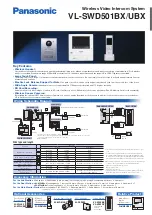
User Manual
DIC324
Warning!
Despite the fact that the module is able to switch the current load up to 500 mA
within the entire temperature range (from -
40°C to +85°C), when using the
module with the high environment temperature (from
+75°C to +85°C), it is not recommended to activate maximum current load
in adjacent channels. In this case you should either lower the load current
down to 400 mA, or assume simultaneous activation of maximum load via
channel, e.g. only in even or odd channels.
3.3
Description of registers and D11 user configuration
Below is the description of main ports' registers of the basic module configuration
(D11):
–
register of outputs (BA+0);
–
register of inputs' states (BA+1, BA+2);
–
register of interrupts (BA+Dh);
–
register of diagram code identifier (BA+Eh, BA+Fh).
3.3.1 Configuration FPGA D11
– Digital_Inputs
D11
– basic option of the diagram for processing inputs. It represents a device that
generates event interrupts with a programmable de-bouncing of contacts and a 16-channel
frequency meter.
It enables to implement the following capabilities:
programmable de-bouncing per each group of eight inputs:
40 ns, 400 ns, 4.5
ms, 140 ms
;
programmable event edge per each group of eight inputs: 1→ 0, 0→ 1, (1→ 0 +
0→ 1);
generation of maskable interrupt from each group of eight inputs;
32-x channel frequency meter;
measuring method: filling with reference frequency;
programmable period of filling frequency: (2...256) × 40 ns;
programmable number of periods of measured frequency: 1...255;
accuracy: up to 16 bit;
generation of an interrupt from the frequency meter.
34











































